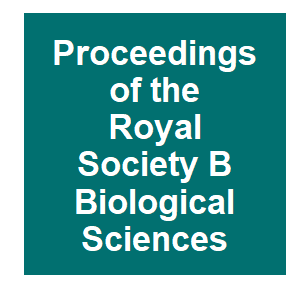
Keywords: house mouse

|
Controlling invasive rodents via synthetic gene drive and the role of polyandryManser, AC, S. J.; Sutter, A.; Blondel, D. V.; Serr, M.; Godwin, J.; Price, T. A. R., Proceedings of the Royal Society B-Biological Sciences, 286:9. 2019.
House mice are a major ecosystem pest, particularly threatening island ecosystems as a non-native invasive species. Rapid advances in synthetic biology offer new avenues to control pest species for biodiversity conservation. Recently, a synthetic sperm-killing gene drive ... Keywords: centromeric drive, chromosomal variation, conflict, gene drive genetics, gene drive mechanism, gene drive natural, Genetics &, house mouse, mammals, meiotic drive, mus-musculus, rearrangements, speciation |

|
Sperm competition suppresses gene drive among experimentally evolving populations of house miceManser, AL, A. K.; Simmons, L. W.; Firman, R. C., Molecular Ecology, 26:5784-5792. 2017.
Drive genes are genetic elements that manipulate the 50% ratio of Mendelian inheritance in their own favour, allowing them to rapidly propagate through populations. The action of drive genes is often hidden, making detection and identification inherently difficult. Yet drive ... Keywords: centromeric drive, chromosomal variation, conflict, gene drive genetics, gene drive mechanism, gene drive natural, Genetics &, house mouse, mammals, meiotic drive, mus-musculus, rearrangements, speciation |

|
Centromere strength provides the cell biological basis for meiotic drive and karyotype evolution in miceChmatal, L., S. I. Gabriel, G. P. Mitsainas, J. Martinez-Vargas, J. Ventura, J. B. Searle, R. M. Schultz and M. A. Lampson, Current Biology, 24:2295-2300. 2014.
Mammalian karyotypes (number and structure of chromosomes) can vary dramatically over short evolutionary time frames [1-3]. There are examples of massive karyotype conversion, from mostly telocentric (centromere terminal) to mostly metacentric (centromere internal), in 102-10 s ... Keywords: centromeric drive, chromosomal variation, conflict, gene drive genetics, gene drive mechanism, gene drive natural, Genetics &, house mouse, mammals, meiotic drive, mus-musculus, rearrangements, speciation |

Contact
David O’Brochta
Foundation for the
National Institutes of Health
geneconvenevi@fnih.org
RSS

